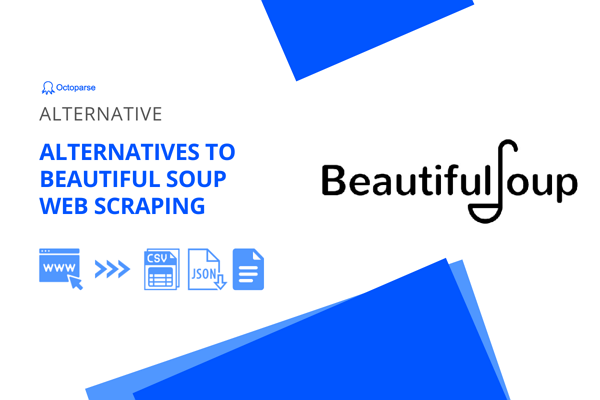
The Evolution of Web Data Extraction: Beyond BeautifulSoup
When I first started web scraping a decade ago, BeautifulSoup felt like a magical toolkit that transformed complex HTML into digestible data. Today, the landscape has dramatically shifted, offering developers and researchers an array of powerful alternatives that push the boundaries of web data extraction.
Understanding the Web Scraping Ecosystem
Web scraping has transformed from a niche technical skill to a critical business intelligence strategy. What began as simple HTML parsing has evolved into sophisticated data extraction methodologies that handle complex, dynamic web environments.
BeautifulSoup, while revolutionary, now represents just one approach in a sophisticated technological ecosystem. Modern web scraping demands more robust, performant, and versatile solutions that can navigate increasingly complex digital landscapes.
Why Look Beyond BeautifulSoup?
Performance Limitations
BeautifulSoup, despite its user-friendly interface, struggles with several critical challenges:
- Parsing Speed: Relatively slow compared to compiled libraries
- Limited JavaScript Rendering: Cannot handle modern single-page applications
- Basic Selector Capabilities: Restricted querying mechanisms
- Memory Inefficiency: Higher resource consumption for large datasets
Top BeautifulSoup Alternatives: A Comprehensive Analysis
1. Scrapy: The Enterprise-Grade Web Crawling Framework
Scrapy represents a quantum leap in web scraping technology. Unlike BeautifulSoup‘s parsing-focused approach, Scrapy offers a complete crawling and extraction ecosystem.
Key Architectural Advantages
Scrapy isn‘t just a library; it‘s a comprehensive framework designed for large-scale web data extraction. Its middleware architecture allows unprecedented customization and scalability. Developers can create complex crawling pipelines, implement robust error handling, and manage distributed scraping tasks with remarkable ease.
import scrapy
class ProductSpider(scrapy.Spider):
name = ‘advanced_crawler‘
def parse(self, response):
for product in response.css(‘.product-container‘):
yield {
‘title‘: product.css(‘h2::text‘).get(),
‘price‘: product.css(‘.price-tag::text‘).get(),
‘url‘: product.css(‘a::attr(href)‘).get()
}2. Selenium: Dynamic Website Interaction Mastery
When websites rely heavily on JavaScript and dynamic content, Selenium emerges as a powerful alternative. It provides full browser automation, enabling interaction with complex web applications that traditional parsing libraries cannot handle.
Real-World Implementation Scenarios
Selenium shines in scenarios requiring:
- User authentication
- Complex form submissions
- JavaScript-rendered content
- Browser-like interaction patterns
from selenium import webdriver
from selenium.webdriver.common.by import By
def extract_dynamic_content():
driver = webdriver.Chrome()
driver.get(‘https://complex-webapp.com‘)
# Wait and interact with dynamic elements
dynamic_elements = driver.find_elements(By.CLASS_NAME, ‘dynamic-content‘)
return [element.text for element in dynamic_elements]3. lxml: High-Performance Parsing Powerhouse
For developers prioritizing raw performance, lxml represents the pinnacle of XML and HTML processing. Implemented in pure C, it offers unparalleled parsing speed and memory efficiency.
Technical Deep Dive
lxml‘s architecture provides:
- Native XPath support
- CSS selector compatibility
- Robust error handling
- Significantly faster parsing compared to BeautifulSoup
from lxml import html
def advanced_extraction(content):
tree = html.fromstring(content)
products = tree.xpath(‘//div[@class="product-listing"]‘)
return [
{
‘name‘: product.find(‘.//h2‘).text,
‘price‘: product.find(‘.//span[@class="price"]‘).text
} for product in products
]4. Requests-HTML: Modern Pythonic Approach
Requests-HTML bridges the gap between traditional parsing and modern web interaction. It offers an intuitive API with built-in JavaScript rendering capabilities.
Unique Feature Set
- Simple, elegant syntax
- Lightweight implementation
- Automatic JavaScript rendering
- CSS and XPath selector support
from requests_html import HTMLSession
def javascript_rendered_scraping():
session = HTMLSession()
response = session.get(‘https://dynamic-website.com‘)
response.html.render() # Trigger JavaScript rendering
titles = response.html.find(‘.article-title‘)
return [title.text for title in titles]The No-Code Revolution: Visual Web Scraping Tools
Octoparse: Democratizing Data Extraction
Not everyone possesses advanced programming skills. Tools like Octoparse have democratized web scraping, enabling non-technical users to extract data through intuitive interfaces.
Key Advantages
- Zero coding required
- Visual point-and-click extraction
- Cloud-based processing
- Multiple data export formats
Future Trends in Web Scraping
Emerging Technologies and Methodologies
The web scraping landscape continues evolving rapidly. Artificial intelligence and machine learning are increasingly integrated into extraction tools, enabling more intelligent, adaptive data collection strategies.
Key trends to watch:
- AI-enhanced extraction algorithms
- Enhanced anti-blocking techniques
- Ethical scraping frameworks
- Privacy-preserving data collection methods
Expert Recommendations for Effective Web Scraping
- Understand website structures thoroughly
- Implement robust error handling
- Respect robots.txt and website terms of service
- Rotate user agents and IP addresses
- Continuously update your technological toolkit
Conclusion: Choosing Your Ideal Web Scraping Solution
No single tool universally solves all web scraping challenges. Your ideal solution depends on specific project requirements, technical constraints, and complexity.
Recommended approach:
- Start with lightweight solutions
- Progressively enhance complexity
- Maintain ethical scraping practices
- Invest in continuous learning and skill development
By understanding the strengths and limitations of various web scraping technologies, you‘ll be well-equipped to extract valuable insights from the vast digital landscape.










